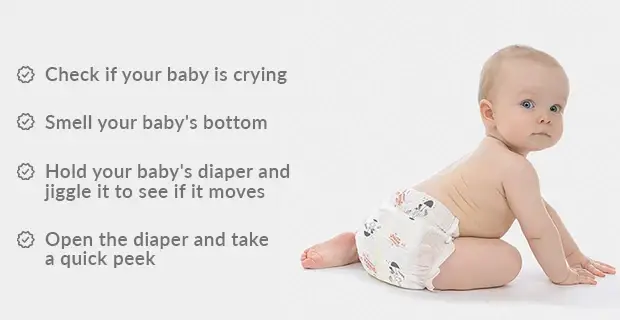Introduction: As a parent or caregiver, one of the essential tasks in caring for your baby is changing diapers. Not only is it important for your child’s comfort and hygiene, but it also plays a significant role in preventing diaper rash and other related discomforts. In this article, we will delve into the topic of how often you should check a Childs Diaper and provide valuable insights on proper diaper changing techniques. So, let’s get started!
- Understanding the Importance of Frequent Diaper Checks: Regularly checking your Childs Diaper is crucial for maintaining their health and well-being. Infants have delicate skin that is more prone to irritation and diaper rash. By checking their diapers frequently, you can promptly address any wetness or soiling, ensuring their comfort and reducing the risk of diaper rash.
- The Newborn Stage: During the newborn stage (0-3 months), babies typically require more frequent diaper changes. As a general guideline, aim for at least 8 to 12 diaper changes per day. Since newborns have small bladders and stools more frequently, it’s crucial to check their diapers every 2 to 3 hours, even during the night.
- The Infant Stage: As your baby grows and their bladder capacity increases, diaper changes become less frequent. Around 3 to 6 months, most infants require approximately 6 to 8 diaper changes per day. Checking their diapers every 3 to 4 hours should suffice, but it’s important to adjust this based on their individual needs.
- Active Babies and Beyond: Once your baby becomes more active and starts eating solid foods, their bowel movements may change in frequency and consistency. From 6 months onwards, you can generally stick to around 4 to 6 diaper changes per day. However, remember to check their diapers every 4 to 5 hours, and more frequently if you notice signs of wetness or soiling.
- Signs That Indicate a Diaper Change: Apart from following a schedule, it’s equally important to pay attention to your child’s cues, as every baby is unique. Signs that indicate a diaper change include:
- Fussiness or restlessness
- Frequent touching or pulling at the diaper area
- Redness or rash on the buttocks or genitals
- Strong odor from the diaper area
- Visible wetness or soiling
By being attentive to these signs, you can prevent discomfort and ensure your child stays clean and dry.
- How to Change a Diaper: Knowing how to change a diaper properly is essential to maintain your baby’s hygiene. Here’s a step-by-step guide:
- Gather all necessary supplies, such as a clean diaper, wipes, diaper cream (if necessary), and a changing pad.
- Lay your baby down on a safe and clean surface, preferably a changing table or a diaper-changing station.
- Unfasten the soiled diaper and gently lift your baby’s legs by the ankles, keeping one hand on their abdomen for support.
- Use wipes or a damp cloth to clean the diaper area thoroughly, wiping from front to back for girls, and in a downward motion for boys.
- Allow the skin to air dry briefly or use a soft towel to pat it dry.
- Apply a thin layer of diaper cream, if needed, to protect against diaper rash.
- Slide a clean diaper under your baby, ensuring the tabs are at the back and the diaper is snug but not too tight.
- Fasten the diaper securely and double-check for a proper fit.
- Dispose of the soiled diaper and wash your hands thoroughly.
Conclusion: How Often Should You Check a Childs Diaper?
Regularly checking your Childs Diaper is an important part of their care routine. By following the guidelines discussed in this article and paying attention to your child’s cues, you can ensure their comfort, prevent diaper rash, and maintain good hygiene. Remember, diaper changing is not just a necessary task but also an opportunity to bond with your little one. Happy diapering! Learn more


